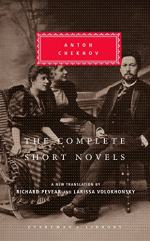|
This section contains 1,014 words (approx. 3 pages at 400 words per page) |

|
Point of View
“The Steppe” is told through a third person omniscient narrator, who focuses on relating Egorushka’s thoughts and feelings. This has the effect of making Egoruhska’s journey seem grand and wondrous, since it is the first major journey of his life. Egorushka’s youth is reflected in the narrator’s voice which often exaggerates the terror of his surroundings or finds joy in simple things.
Chekhov employs the literary technique of estrangement, characteristic of Russian literature at this time, in this novella. Estrangement refers to the description of familiar things in an unfamiliar way. For instance, when Egorushka watches Kuzmichov count his money, the narrator says, “Another time such a mass of money might have struck Egorushka and prompted him to reflect on how many bagels, babas, and poppy-seed rolls could be bought with this pile; but now he looked at it impassible and...
|
This section contains 1,014 words (approx. 3 pages at 400 words per page) |

|




